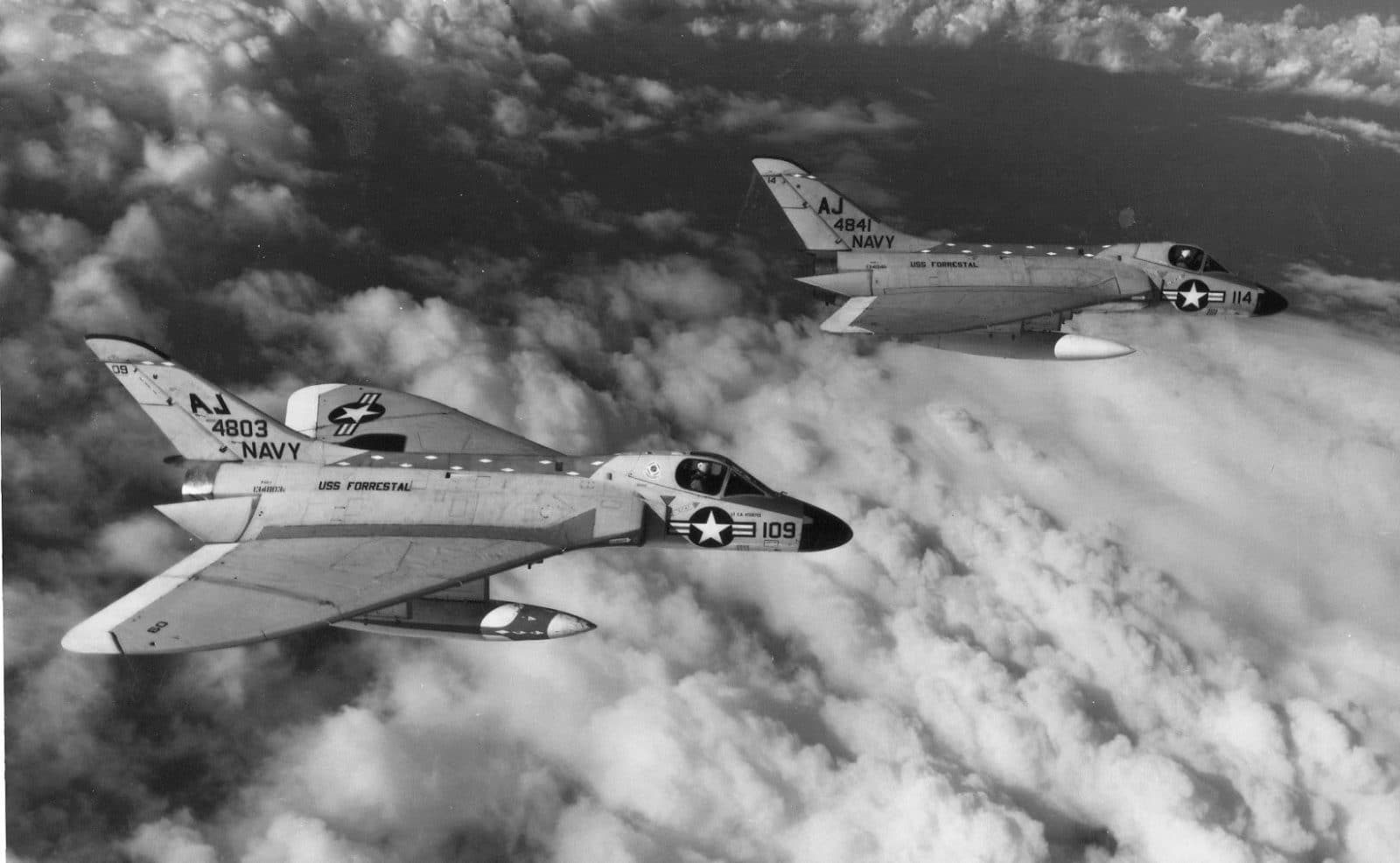The F4D Skyray was a Great Performer But Timing was Not on Its Side
The date was 16 April 1956. The place was Naval Air Station (NAS) Moffet Field near San Francisco. Then and there, US Navy Composite Squadron THREE (VC-3) Gray Knights became the first Navy squadron to achieve operational status with a sensational new bat-winged jet fighter- the Douglas F4D-1 Skyray or Ford. The new jet would go on to become the first carrier-based aircraft to hold a world absolute speed record (752.944 miles per hour) and the first such aircraft capable of exceeding the sound barrier (Mach 1) in level flight. How the Skyray got there is the meat of the story.

Luftwaffe Roots
Two Douglas aerodynamicists, Gene Root and Apollo M.O. “Amo” Smith, went to Paris to assess aerodynamic data captured from the Germans after their surrender in 1945. The two men found the wind-tunnel test data obtained from several tailless German prototypes along with the Messerschmitt Me-163 Komet rocket-powered interceptor. Root and Smith also discussed designs with Dr. Alexander Lippisch, the man behind the Komet and many of the German delta wing and tailless designs. Lippisch had reportedly been influenced by Indonesian zanonia seeds.

The Perfect Moniker
After returning to the States, Root and Smith began working on a delta-winged interceptor. When in 1947 the Navy Bureau of Aeronautics (BuAer) request for a short-range high-altitude carrier-based interceptor, Douglas leveraged the recent delta wing research to quickly draw the D-571. Teaming with renowned Douglas designers Ed Heinemann and R.G. Smith, the D-571 was redrawn as the D-571-4 for the BuAer request. BuAer issued a contract for two prototypes under the designation XF4D-1. All it took was one look at the wing planform of the jet to hang the name Skyray on it.

Resembling a UFO
The prototypes were built under a curtain of unusual secrecy, including screening of information released to the public about the program. In October 1950 the first XF4D-1 prototype was rolled out. The jet wasn’t a flying wing. It wasn’t a true delta wing either. People said it looked like a valentine heart or even the ace of spades. The XF4D-1 had no horizontal tail so pitch was controlled with hydraulically-boosted elevons on the trailing edge of the wing. In the event of a hydraulic system failure, the control stick could be extended so the pilot had the additional leverage needed to wrestle the system.

Ground-Breaking Features
Other design characteristics included thick wing roots containing engine air intakes combined in the fuselage to provide air for a single turbojet engine. Splitter plates were fitted to production aircraft to reduce turbulence down the intakes. Both wings and the fuselage contained fuel. The wings, swept at 52.5 degrees, were fitted with leading edge slats to provide additional life at low speeds. Pitch trimmers and air brakes were mounted inboard close to the engine exhaust.

The Propulsion Solution
The pitch trimmers were normally locked in the full up position on takeoff and landing. Wings were capable of folding for carrier storage. The engine initially chosen for the Skyray was the ill-fated Westinghouse J40. Thankfully, unlike the McDonnell F3H Demon, the F4D design had enough room to accommodate the larger, more powerful, and far more reliable Pratt & Whitney J57 engine- various versions of which powered the 421 Skyrays built by Douglas at their plant in El Segundo, California.

Gunfighter
The Skyray was armed with four Colt M12 20 millimeter cannons, but these were often removed and the gun ports covered. The jet was equipped with the AN/APQ-50A search/single-track radar tied to an Aero 13F fire control system. Under the jet were three pylons on each wing and a centerline pylon. Total maximum external load was 4,000 pounds. Two 300 gallon drop tanks were often carried on the middle wing pylons.

The Texaco Skyray?
Though capable of carrying bombs and other air-to-ground ordnance, Skyrays weren’t usually so loaded. Fords did often carry Raytheon AAM-N-7 Sidewinder heat seeking air-to- air missiles. The F4D-1 was not equipped with an internal refueling probe, though the jet was capable of carrying external tanks with refueling probes attached to them. Later in their careers, Skyrays were also fitted with a spool for towing a target sleeve or dart-style tow target.


Watched the F4D’s fly as a Marine at El Toro from 1956-1959. Great airplane but what happened to the F5D?
Just wanna point out that the VF-74 Be-Devilers deployed in the fall of 1957 in the Skyray to the Med on the Midway Class Roosevelt. You can check the cruise book. They may also have deployed with the Skyray in 1956, but I couldn’t find a reference.